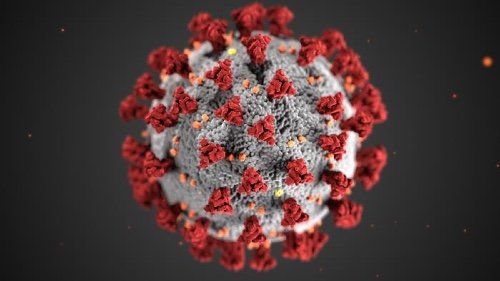Experts Reinforce Difficulties in Using CT for COVID-19 Detection
While some facilitie still turn to CT for help with diagnosis, experts reiterate the shortcomings of the scan.

When COVID-19 first emerged, CT was considered a good option for detecting infection in the lungs. With the current gold-standard of molecular testing sometimes being in short supply in some geographic areas, some hospitals and facilities are still making use of CT scans.
And, this mixed bag of diagnostic activity - and the mixed messages it sends - have prompted researchers from Washington University in St. Louis to evaluate the benefit of CT in a clinical perspective article published in the American Journal of Roentgenology.
By examining the existing body of literature that has emerged on the use of CT since the beginning of the pandemic, the 11-expert team, led by Constantine A. Raptis, M.D., associate professor or radiology and director of thoracic MRI, highlight the key problem areas of using these scans for detection.
“This is not to say these studies are not valuable,” he said. “However, test performance and management issues arise when inappropriate and potentially over-arching conclusions regarding the diagnostic performance of CT for COVID-19 pneumonia are based on low-quality studies with biased cohorts, confounding variable, and faulty design characteristics.”
While the features of COVID-19 pneumonia seen on CT are an important initial step, issues exist with sensitivity, specificity, and in clinical practice, the team wrote.
Sensitivity: Throughout the literature, the sensitivity of CT in detecting viral infection has been reported to be as high as 98 percent. However, in some cases, Raptis said, this rate could be based an the population scanned.
“If a study cohort contains patients who are more likely to have a true-positive finding and less likely to have a false-negative finding, sensitivity will be over-estimated,” he said.
And, in the case of COVID-19, a misdiagnosis could mean unintentionally exposing multiple people to an infected individual, continuing the spread of the virus.
Specificity: While false positives associated with the reverse transcriptase-polymerase chain reaction (RT-PCR) test can happen, Raptis explained, they are most often caused by contamination and are likely insignificant in the assays for COVID-19. CT, though, doesn’t test for singular features, and the ones it does identify for COVID-19 pneumonia - peripheral and bilateral ground-glass opacities typically in the lower lobes - are often seen in other infectious and non-infections conditions.
Clinical Practice: There are also several challenges that exist with deployment of CT throughout a hospital. According to Raptis’ team, it could lead to overuse of hospitals resources, including personal protective equipment that is already in short supply, clustering of patients both affected and not affected by the virus in the radiology departments, and an increased risk of transmission to the imaging staff.
Overall, these issues indicate clinical environments should reserve CT for another use during the pandemic.
“At present,” the team wrote, “CT should be reserved for evaluation of complications of COVID-19 pneumonia or for assessment if alternative diagnoses are suspected.”
Study with CT Data Suggests Women with PE Have More Than Triple the One-Year Mortality Rate than Men
April 3rd 2025After a multivariable assessment including age and comorbidities, women with pulmonary embolism (PE) had a 48 percent higher risk of one-year mortality than men with PE, according to a new study involving over 33,000 patients.
The Reading Room: Racial and Ethnic Minorities, Cancer Screenings, and COVID-19
November 3rd 2020In this podcast episode, Dr. Shalom Kalnicki, from Montefiore and Albert Einstein College of Medicine, discusses the disparities minority patients face with cancer screenings and what can be done to increase access during the pandemic.
Predicting Diabetes on CT Scans: What New Research Reveals with Pancreatic Imaging Biomarkers
March 25th 2025Attenuation-based biomarkers on computed tomography (CT) scans demonstrated a 93 percent interclass correlation coefficient (ICC) agreement across three pancreatic segmentation algorithms for predicting diabetes, according to a study involving over 9,700 patients.
Can Photon-Counting CT be an Alternative to MRI for Assessing Liver Fat Fraction?
March 21st 2025Photon-counting CT fat fraction evaluation offered a maximum sensitivity of 81 percent for detecting steatosis and had a 91 percent ICC agreement with MRI proton density fat fraction assessment, according to new prospective research.